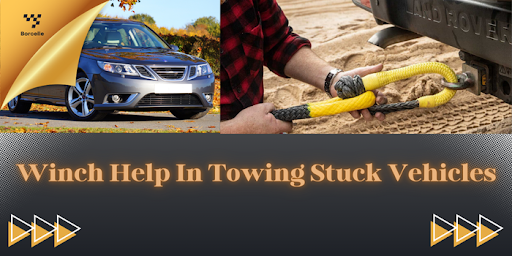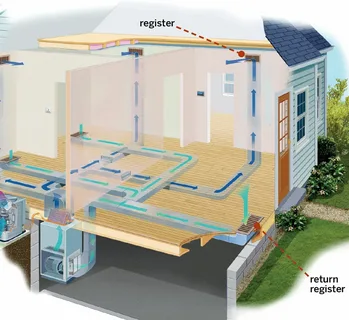A winch is a very important piece of equipment that is mostly used in towing or recovery operations. Whenever you get stuck in a vehicle while moving off-road or need to tow a vehicle from a difficult spot, it is a winch that will give you the power to pull a vehicle out of there. Winches are used for operations; you use them not just to tow but also to recover vehicles that have got stuck in mud, snow, or even water, or on a steep incline. In an emergency, search for tow truck service near me, and you will contact people who are capable enough to use a winch to recover cars locally. This article explores how the winch works in towing stuck vehicles, the types of winches available, and the benefits of using such equipment in towing operations.
What Is A Winch?
A winch is a mechanical device that is engaged in rolling up a cable or a rope, normally made of steel or synthetic material, around a drum or a spool. The winch has either motorized or manual application that can pull a rope and apply a great force to an object. When a winch is attached to any vehicle, then it helps in moving or recovering that vehicle when it is trapped or stuck in hard positions. In case your vehicle is stuck and you need professional assistance, search for Winch Recovery Service Near Me to connect with the local experts specializing in winching recovery services for vehicles while in difficult situations or terrains.
There are two primary Types Of Winches: Electric And Hydraulic.
- Electric Winches: Mobile winches that are powered from the battery of the vehicle for recreational towage and off-roading. Operate with a switch flick and best for lighter to medium recoveries.
- Hydraulic Winches: these winches are powered with hydraulic force taken from various vehicles. They offer better pulling power as compared to electric winches. They are used for such heavy-duty recoveries as pulling larger vehicles or getting over very difficult terrain.
How Does A Winch Help In Towing Stuck Vehicles?
A winch plays a critical role in towing and recovering vehicles that are stuck in challenging conditions. The process involves several key functions:
- Force application on the stuck car: a winch is most suited to providing the essential pulling force that may be required in moving a stuck vehicle. This means that the wheels of the vehicle may not have sufficient traction to move the vehicle at their own using the engine when a vehicle is bogged down in mud, snow, water, or steep downhill or uphill slopes. It provides the extra necessary pulling force for a vehicle to move on its own and get back into action.
- Securing Tow Point: A winch is usually attached to secure points designed to be used for hoisting purposes on the vehicle, such as a tow hook or a recovery point. The winch’s cable or rope is then anchored to something immovable, such as a tree, boulder, or another vehicle. Once the winch is attached and engaged, it can pull the stuck vehicle hair toward the anchor or toward a location where it can regain traction.
- Winch Vehicle from Awkwardly Positioned Terrain: The tire could be in so deep that the little contact would not be able to generate enough force with which it could go about moving the vehicle, and instead, it would sink in mud, sand, or snow, which causes it to get stuck mid-drive. A winch can be applied to pull a vehicle from these tough conditions under a constant and powerful force that eventually outweighs the resistance of the terrain.
- Moving Vehicles uphill or on Steep Heads: Indispensable for off-road and recovery operations where pulling a vehicle up a steep slope is required. A winch has a powerful motor that enables the vehicle to pull upward when the vehicle’s powertrain has—most often—insufficient output to do so.
- Extraction of Vehicles Transported by Water or Mud: When such vehicles get stuck in water or mud, then either their wheels get submerged or bogged down, and movement becomes impossible for the vehicle under its power. A winch can be used to get such types of vehicles out of those environments without needing any other vehicles to come and pull them to the site.
- For pulling vehicles over obstacles: In certain cases, vehicles may find themselves obstructed by obstacles such as fallen trees, rocks, and steep slopes. A winch can solve the problem in several ways: moving the vehicle over the obstacle or pulling the object out of the way.
The Process Of Using A Winch To Tow A Stuck Vehicle
Using winches for towing or recovering stuck vehicles requires several procedures to make them safe and effective. First, evaluate the vehicle’s position and search for suitable anchor points as stage one of assessing the situation. The next step is to secure the anchor point (tree or another vehicle) so that it will hold a minimum of the force of pulling. The next step is to attach the winch cable to the vehicle’s designated recovery point. If all is in place, run the winch while keeping a safe distance for the observer. Closely monitor the recovery process and apply force gradually to prevent damage. This method assures a safe, controlled recovery without straining the winch or vehicle.
The Benefits Of Using A Winch For Towing Stuck Vehicles
Using A Winch To Tow Stuck Vehicles Offers Several Key Advantages:
- Versatility: Winches are very versatile and can be applied in almost any kind of recovery, like pulling out a vehicle stuck in mud, snow, on steep inclines, or even from water.
- Increased Safety: A winch will let him recover the vehicle without putting himself in danger; neither would he need another vehicle, risking that vehicle getting stuck too. Thus it cuts down the chances of further complicating matters by another accident.
- Ease of Use: Modern electric and hydraulic winches operate with simple controls, making it possible for one person to operate them easily. This ease has made winching very user-friendly for off-roaders as well as recovery professionals.
- Cost-Effective: For many off-road fans or even professionals, a winch is a far more economical solution than towing with a conventional vehicle, especially in remote locations where normal towing is impossible.
- Prevents Further Damage: A winch can pull off a stuck vehicle very carefully and judiciously without further damaging the car’s transmission, suspension, and most vital parts. This is more important in expensive and delicate cars.
- Minimizes the Need for Extra Equipment One Winch can accomplish recovery tasks that might normally need specialized equipment, such as bulldozers, cranes, or other really heavy equipment; that much less manpower to save time and resources.
Conclusion
A winch is one of these basic tools that a person might think of when called upon to tow or recover a stuck vehicle. It is powerful and efficient in bringing out vehicles that find themselves in tough situations. Therefore, whether you are that avid off-roader out there a professional recovery specialist, or someone who just happens to enjoy outdoor adventures, a winch will give the last peace of mind that now and then one can recover that stuck vehicle with even less hassle. Having the right winch and the perfect recovery techniques enables the recovery even through the most difficult towing scenarios to be done most safely and effectively.



